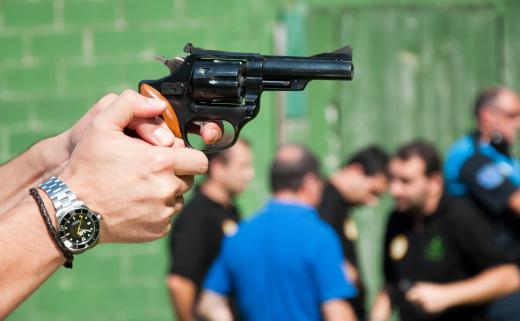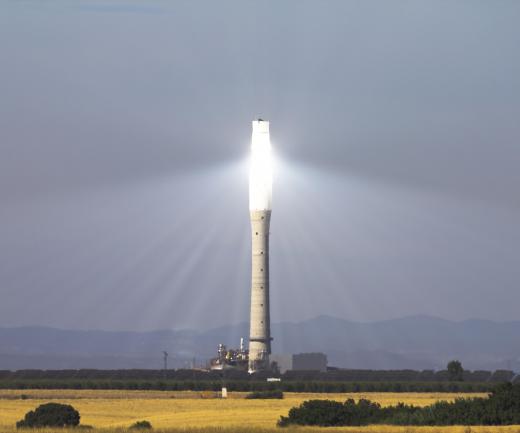What Is Incident Energy?
In technical terms, incident energy is energy that falls upon or strikes something and then transfers some or all of its power into the object. In more straightforward terms, an incident is something that creates energy and that energy travels away from at its point of origin. The energy will strike other objects and interact with them in some fashion. This type of energy is common everywhere, as the sun creates incidental solar energy, but it is most often associated with thermal radiation and assessing kinetic force.
The most important part of incident energy is the word "incident." This describes an existence of energy rather than a type. For example, thermal energy is heat and kinetic energy is movement, but incident energy could be either or any other form of expelled force. The incident is the creation of the energy itself; this could be a gunshot or fire in a fireplace. In both cases, the energy is created at a source and moves away from that source.

As energy moves away from the incident, it begins to impart its force on its environment. Some of the energy is absorbed by objects that are within the path of the energy, such as people warming their hands by the fire. In this case, the incident created incident energy and the person interacts and absorbs it.
While incident energy is everywhere, it is most commonly associated with a few specific things. The most common form of this energy is thermal energy from heat sources. Solar sciences refer to the amount of incident energy absorbed by objects, meaning the amount of solar energy they take in. This is a major part of the design and refinement of solar panels. In addition, the thermal energy given off by industrial processes is measured as a means of determining worker safety procedures.

When discussing kinetic force, the incident is typically more direct. In general terms, something happens that creates a kinetic force and that force moves from its origin until it hits something. The force then continues on into that struck object, thereby imparting incident energy. The energy may be completely absorbed by the object or the object may only absorb some and the kinetic force will continue on.
In a specific example, a person fires a gun and the bullet travels through the air until it hits a bottle. The gun is the incident and the bullet is propelled by incidental kinetic energy. The bottle absorbs part of the kinetic energy and shatters; the energy is split between the still traveling bullet and the flying shards of glass.
AS FEATURED ON:
AS FEATURED ON:












Discuss this Article
Post your comments